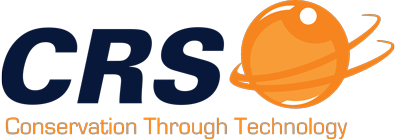Case Studies
Case Study – Automated Demand Response
CRS was tasked to come up with a solution to remotely initiate the efforts of both load shedding via a BMS (Building Management System) as well as remote starting the facility’s emergency generator via a secure connection. This was a large campus installation with multiple forms of power (street, photovoltaic, and generator), as well as a heavy usage pattern for the type of business.
CRS initially surveyed the customer site to gather information on the project to assess the size of the generator, available monitoring points (main feed, secondary, etc.) and the appropriate monitoring equipment to be used. In addition we assessed what types of existing internal controls were available that we could interact with remotely. Our Wattnode solution was selected, along with custom sized 6×4 CTs, to attach to the feeds in the Transfer Switch in order to monitor the power coming from the generator. We isolated the transfer switch contacts that are used to manually start/stop the generator as well as initiate a transfer of load. Separately, the existing BMS was programmed with sets of contacts for us to remotely initiate load shedding, staged ramp-up of services, or return to normal operation. Through remote connectivity on a private wireless network only accessible to CRS, we could then initiate load shedding, simultaneously start & warm up the generator, then transfer load when appropriate, afterwards ramping up staged services like chillers to run from the generator. Reverse procedures and series of contact closures allow a normal transfer of load back to street power, as well as power down cycle of the generator, without stressing the local power feed from the utility.
The solution as provided, accomplishes all goals:
- Security – The system utilizes a private wireless network only accessible by CRS with no path to the public cloud. Since no customer Telephone/LAN/WAN or internet services are involved, all controls are secure from outside hacking or tampering.
- Reliability – With no customer provided connectivity, multiple points of failure are removed, increasing overall system reliability. Direct feedback from equipment allows CRS to monitor response and adjust accordingly.
- Low to No Customer Interaction When Complete – Initial concerns had been that staff would need to manually shed chillers and other equipment before transfer could take place. The installed system handles these concerns ensuring a smooth transition that is also timely.
- Ease of installation – Although a licensed electrician is necessary for this type of installation, a disruption of power and services was avoided.
Off the shelf products without custom programming, would have fallen short on most of these goals, especially the secure communications portion and staged interactions with equipment. Our solution however exceeded goals and expectations providing an automated demand response package that needs no location-based staff to interact or respond when an emergency or alarm condition arises. Performance has been flawless since installation, and the customer has received high praising remarks from their utility for their facility’s actions when called upon.
Case Study – Installed Capacity Management in New England
Since the summer 2013, CRS’s “Proactive Demand Management Service” has helped several industrial, commercial and institutional consumers in New England reduce their ICAP (Installed Capacity) charge by voluntarily reducing their electricity demand during Power Grid system peak demand hours. Customers were able to save thousands of dollars annually without the pain of being on 365 days year-round standby for Grid administered demand response programs.
One of these customers in New England was a custom manufacturer whose peak summer demand ran around 6,200 kW in 2013 and 8,000 kW in 2014. CRS was already providing web-based near real-time monitoring of electricity usage (5 minute interval meter data every 5 minutes) and analytical tools at this facility and was able to provide additional value to the customer by proactively managing the customer’s annual ICAP “tag” value. During the summers of 2013 and 2014, CRS utilized its daily predictive analysis tools to successfully forecast and anticipate when ISO New England’s system peak demand hour would occur and CRS proactively notified the customer prior to the system peak hour allowing the customer to significantly reduce its demand during the system peak and thereby minimize its ICAP tag values. In the summer 2013, the customer reduced its demand from 6,200 kW to about 100 KW during ISO New England’s system peak hour, which reduced its ICAP tag value for the 2014 operating year (June 1, 2014 – May 31, 2015) to 100 KW saving them $209,352 in ICAP charges for the 2014 year (6,100 x $2.86/kW/month x 12 months). In the summer 2014, the customer reduced its demand from 8,000 kW to about 400 KW during ISO New England’s system peak hour, which will reduce its ICAP tag value for the 2015 operating year to 400 KW saving them $285,456 in ICAP charges for the 2015 year (7,600 x $3.13/kW/month x 12 months). Many other commercial customers as well as high schools, colleges and universities have similarly benefited from this service over the past two years.
To help these customers realized ICAP savings/cost avoidance through our Proactive Demand Management Service, CRS followed a specific process. The CRS team first evaluated the customer facility’s ability to voluntarily reduce demand during the annual system peak demand hour, and calculated potential savings that could be generated from ICAP management. As part of this process, CRS ensured that a given customer’s energy supply contract enabled them to benefit from ICAP pass through and assisted in restructuring their energy supply contracts when necessary. Once the customer facility signed up for our services, CRS monitored and modeled daily power grid demand, weather, and historical data to predict the likely annual system peak demand hour for a given year. CRS then proactively notified customers of the peak hour with Day-Ahead email and text advisories and notifications as well as Day-Of advisories and notifications. When a predicated annual system peak demand day and hour arrived, customer facilities simply curtailed their demand during the predicted peak hour (on a strictly voluntary basis) based on the proactive notifications from CRS. CRS also provided a web-based Dashboard allowing customers to monitor their load and demand reductions in real-time as well as utilize other useful CRS energy usage monitoring, analytical, and reporting tools. Once CRS had proven a customer facility’s demand reduction during the system annual peak demand hour, CRS provided the administrative services and follow-up with the local utility or non-utility providers to monetize the customer’s ICAP savings/avoided cost to be effective on June 1 of the following operating year.
CRS’s Proactive Demand Management Service accomplished the following goals and provided the following benefits to participating customers:
- A significant amount of savings were generated by proactive management without heavy lifting.
- Customers benefited from CRS’s market expertise in monitoring and predicting the annual system peak demand hours.
- CRS was able to predict these hours with the fewest notifications possible to help minimize the impact on customer operations and maximize savings opportunities.
- The service was entirely voluntary and there was no obligation to participate. If a customer did not respond during a peak hour event, there was no penalty and the customer simply missed the savings opportunity.
- The service did not impact a customer’s participation in ISO New England’s Demand Response Program and generated supplemental savings over and above ISO New England’s Demand Response Program.

